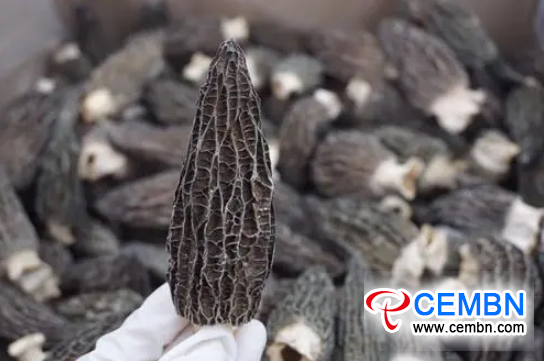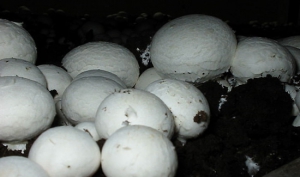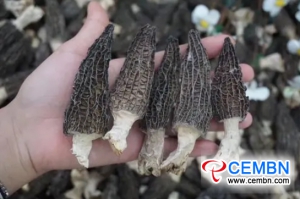
Mushroom Matter
Welcome on our platform. Why MUSHROOM MATTER? Because mushrooms play an important role in our lives as well in business. Our goal is to bring the world the very latest mushroom news with the upmost care to support the positioning of our beloved Mushroom.
Mushrooms may accompany other fruits and veggies in the produce aisle, but they’re grown very differently than other plants we eat. There are no fields or forests. No tilling of soil or sowing of seeds. Sunshine isn’t even necessary to grow the nutritious fungi.
Instead, rows and stacks of mushroom-growing beds are lined up in large climate-controlled buildings. They’re kept indoors so they can be grown year-round in optimal environmental conditions. To learn more about the intricacies of growing high-quality mushrooms, we chatted with someone who grows them herself.
Sonya Beltran grows white mushrooms with her family at First Generation Farms in southeastern Pennsylvania. Her dad got started in the industry almost 40 years ago, so she grew up around mushroom farming. Later in life, she joined him at the family business and is now the director of operations. Sonya, along with her dad, mom and best friend, oversee the farm’s operations, while about 70 team members help them care for and harvest mushrooms.
Please read the full article here.
At the last board meeting of the Bund deutscher Champignon und Kulturpilzanbauer e.V. (BDC) two new members of the association were confirmed. Monaghan Pilze GmbH and Mushroom Park GmbH joined this year. In the telephone meeting on May 5, 2020, the board and advisory board members made it clear that one can only meet the future with solidarity in German mushroom cultivation. The mushroom farms have many challenges to overcome. Last but not least, the corona pandemic has shown how important an association can be in order to effectively reflect interests and concerns in politics.
Please read the full article here.
On June 23, in Ganoderma Base located in Naxu Village, Heng County, Guangxi Province of China, the first batch of Ganoderma are entering into harvest phase, growers are busy with picking and sorting.
“After the drying, the estimated weight of this batch of Ganoderma could reach 60 kg, to calculate by the present market price of 600 CNY per kg, this batch of dried Ganoderma is expected to generate over 36,000 CNY of economy for our village, and it is quite considerable,” introduces clerk of Naxu Village warmly, adding that next step, he plans to expand the cultivation scale to over 20 mu, lift the market competitiveness by enhancing the management of the base and lifting the cultivation technology of Ganoderma.
On June 16, walking into mushroom base located in Pingzhuang Town, Cengong County, Guizhou Province of China, Agrocybe cylindracea are entering into picking time, growers are busy with picking, sorting and packing.

“Agrocybe cylindracea grow fast in rainy weather, and they occur again at night after they are picked in the morning, daily output on fresh Agrocybe cylindracea reaches 2000 kg,” said Mr. Ding Defen, vice-general manager of Guizhou Qiangu Mushroom Co., LTD passionately, adding that by the end of 2020, the company’s expected annual mushroom output value could come to over 10 million CNY.
Industrialized Cordyceps militaris base which holds 95 million CNY of fund is put into production
On June 9, openiong ceremony of The Fourth Phase Cordyceps Militaris Project was successfully held in Sichuan Qiying Mushroom Company.
Since Qiying Company enters in modern agricultural demonstration zone of Pengxi County, Sichuan Province of China, it has successively built Phase One, two and three of project, daily output on King oyster mushroom reaches 120 tons, annual output comes to 42,000 tons, mushrooms are sold well to over 23 provinces and cities in China, annual output value hits 260 million CNY.

“We are one of the largest mushroom enterprises engaging in industrialized Cordyceps militaris production in China,” said manager of Qiying Company confidently, going on that in September, 2019, the company formally launched the construction on phase-one project of industrialized Cordyceps militaris production. By now, the project has been put into production, daily output on fresh Cordyceps militaris totals 40 tons while annual output value attains 280 million CNY.
If one wants to start a discussion with a grower (or with a consultant), start talking about watering.
How much, when and what watering method.
To make any sense though, you first have to define the period. There is watering on casing soil and watering over mushrooms and between flushes.
This blog is about watering on the casing soil during the incubation period. The water given in that period is to bring the casing soil up to the maximum moisture level and to keep the compost at the right moisture.
A good phase 3 compost at the moment of casing will be around 60% in moisture. For white strains that can be up to 3% higher, brown strains prefer 1 or 2% drier. It is not possible to bring the compost to a much higher moisture level by watering it after filling. It is possible to give water into the compost but that will be free water which has to disappear during the fructification period.
2 up to 4 litres of water can be given into the compost at filling or later but that should be the maximum. Even if it is necessary to cool the compost. This can better be done by giving water into the casing and let it evaporate with fresh air and circulation.
Casing soil itself can handle up to 7 litres per m² plus the water that was originally in the casing. To be sure, we talk about a casing containing white and black peat.
More than 7 litres will evaporate, go into the compost or down the drain.
Considering that the evaporation can be around 2 litres per m² per day, the loss with evaporation is about 10 litres. If you count the loss of dripping, the water staying in the compost and the evaporation you come to a figure of about 25 litres of water. In practical situations this means a total amount of water between 20 and 30 litres average. Depending on the farm and the time of the year. Growing drier often means a loss of production and growing a lot wetter means problems in growing, mainly in the outgrow of mushrooms.
Another thing to watch for is the watering method. Make sure that the pressure of the water onto the casing is not too high. Too many times I see a casing with a damaged surface which will give problems in the evaporation.
Every system has a different pressure and if you are not sure, ask the manufacturer. Regularly cleaning of the nozzles is something will help maintaining the right pressure and the right adjustment of the watering trees, looking at distance and height according to the casing level.
Keep watering but do not take it over the top!!
On June 3, Button mushrooms cultivated in Qianshilayuan Village, Linxi City, Shandong Province of China are in picking phase.
“Button mushrooms are a little bit crisp when eaten raw,” introduces Mr. Liu Qingyong, person in charge of mushroom project in Linxi City, going on that they use black earth from Northeast China and Canadian soil which is rich in humus, and it helps effectively lock moisture, maintain good water permeability and ensure Button mushrooms a sterile soil environment.
In Qianshilayuan Village, Button mushroom industry greatly boosts poverty alleviation. A few years ago, in order to lead local population to get rid of poverty and grow rich, Mr. Liu determined mushroom cultivation as the good solution after repeated study and investigation. Then, he consolidated over 5.2 million CNY of fund on establishment of 13 industrialized Button mushroom greenhouses. By doing so, 13 poor villages are able to get 30,000 CNY of guaranteed bonus each year. In addition, by now, 20-30 farmers have been driven to get stable jobs near their homes and generate an annual incomes of 20,000-30,000 CNY.

On May 28, a batch of artificially-cultivated dried Morel mushrooms weighting 500 kg and valuing 100,000 USD were exported to Switzerland from Gansu Qingzangyuan Biotechnology Development Co., LTD for the first time.

“Thanks to the great help and support from technical center of Lanzhou Customs which accomplished the filling work in only 7 days after our application, and it indeed ensured our mushroom export a success,” said related person in charge of Gansu Qingzangyuan Biotechnology Development Co., LTD excitedly, going on that by now, the company has signed an intentional export order of dried Morel mushroom that totals 5 tons.




























